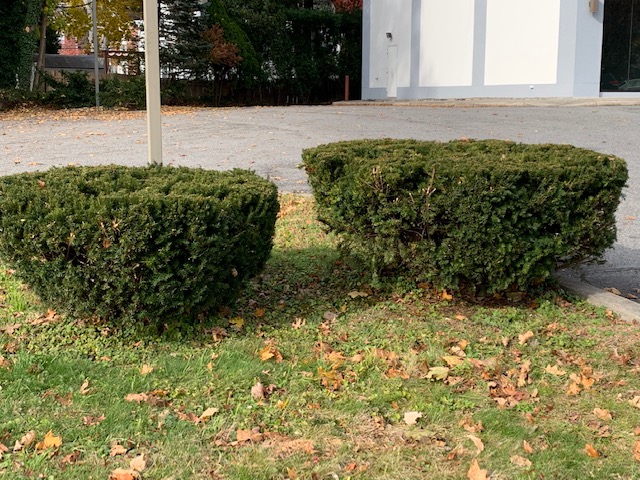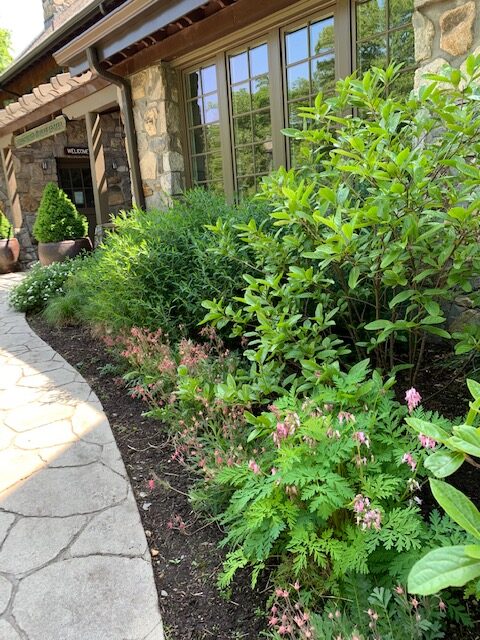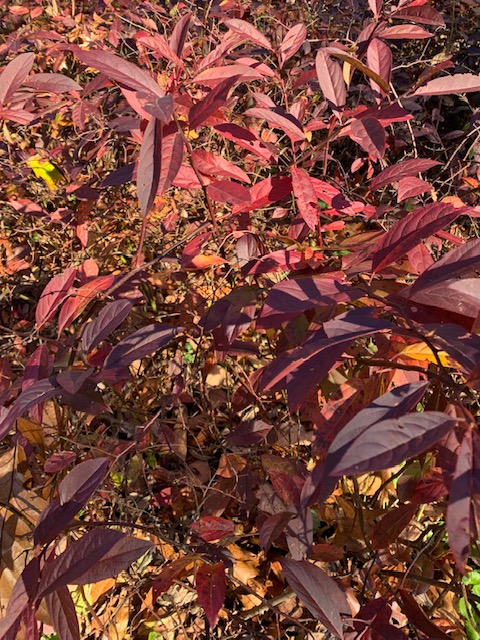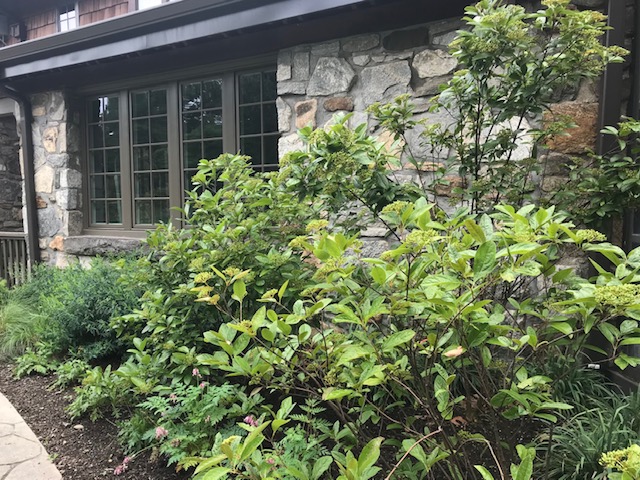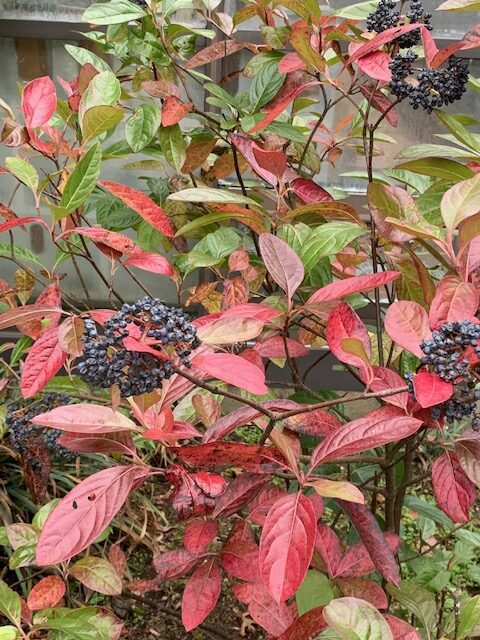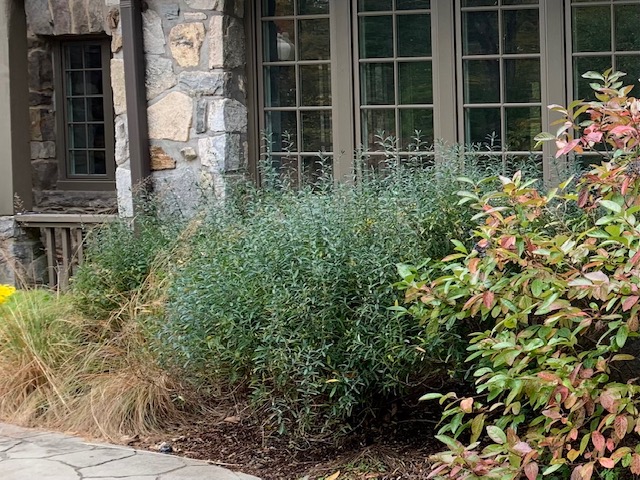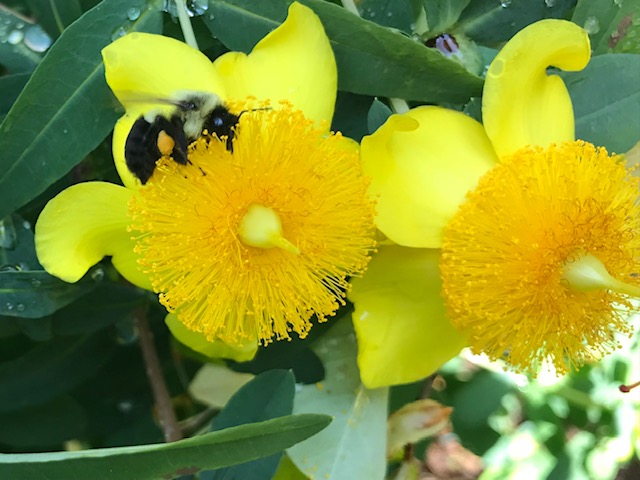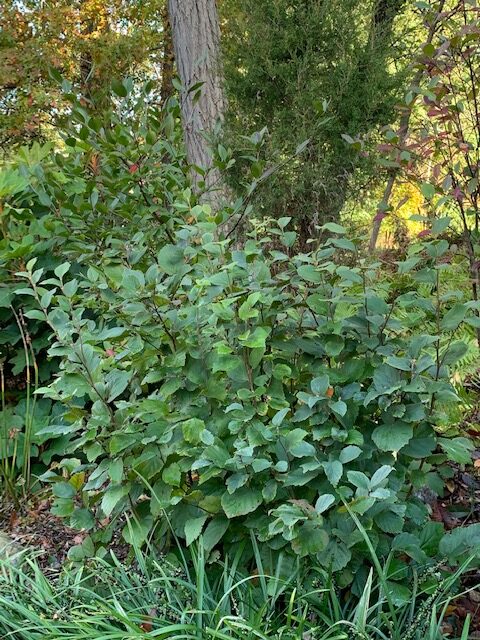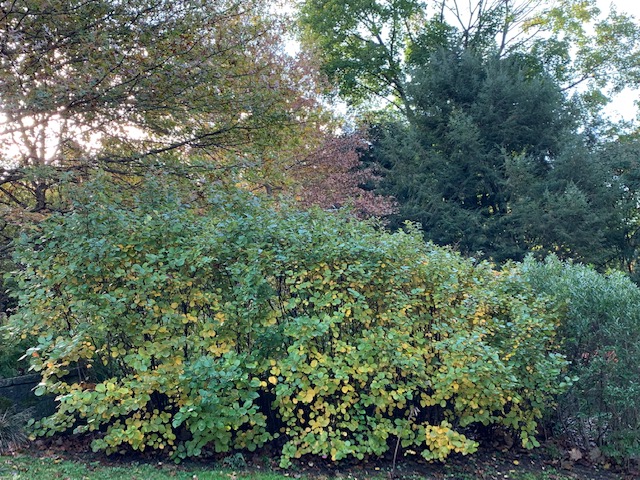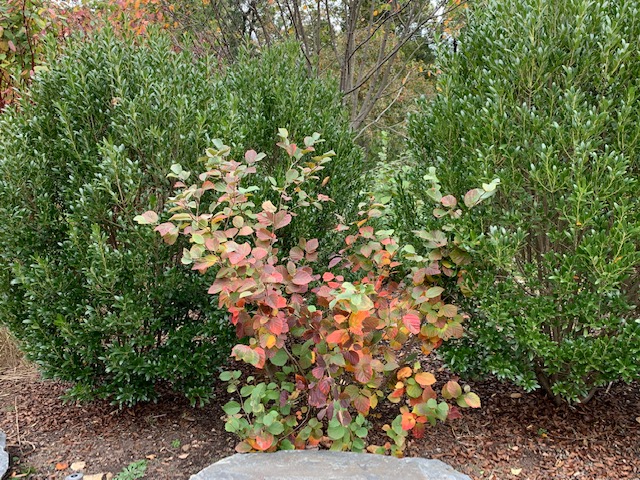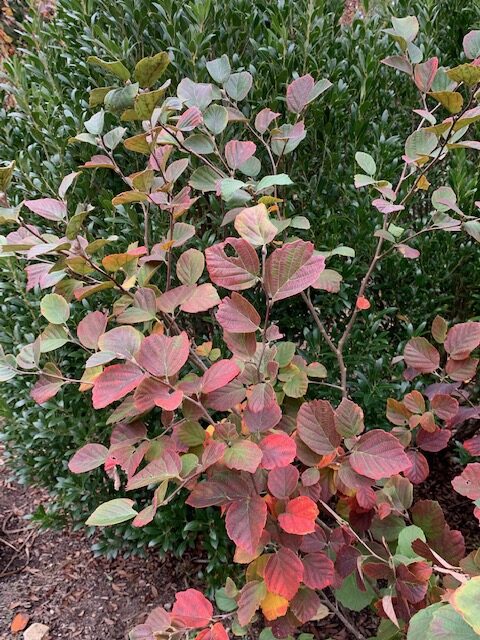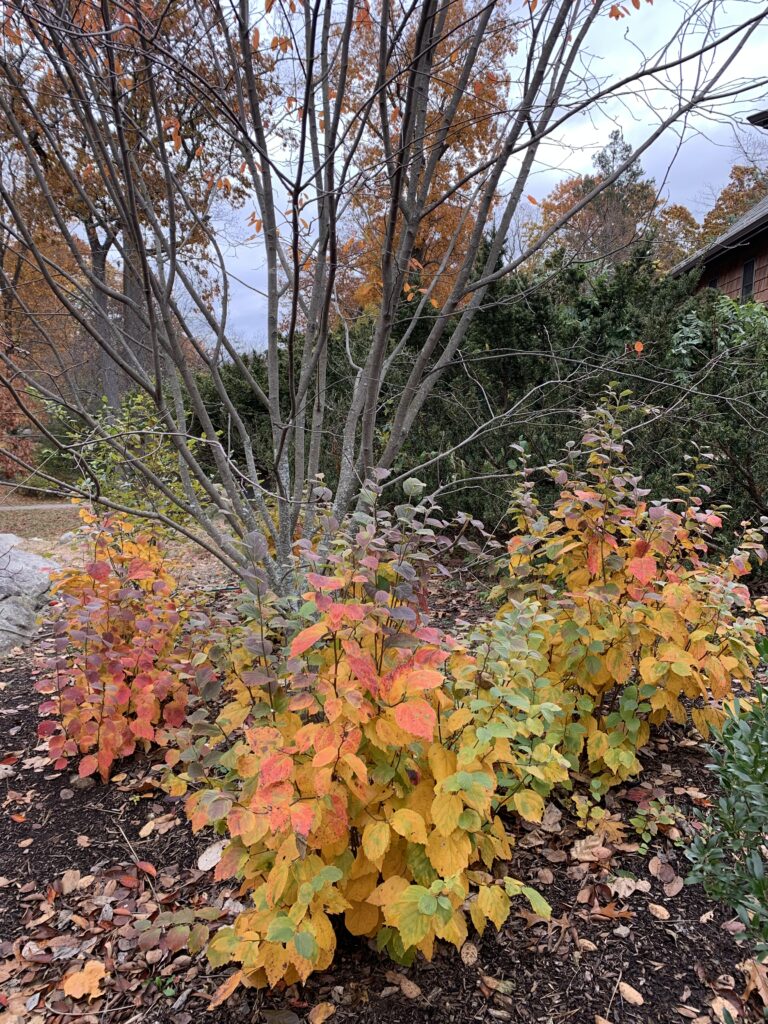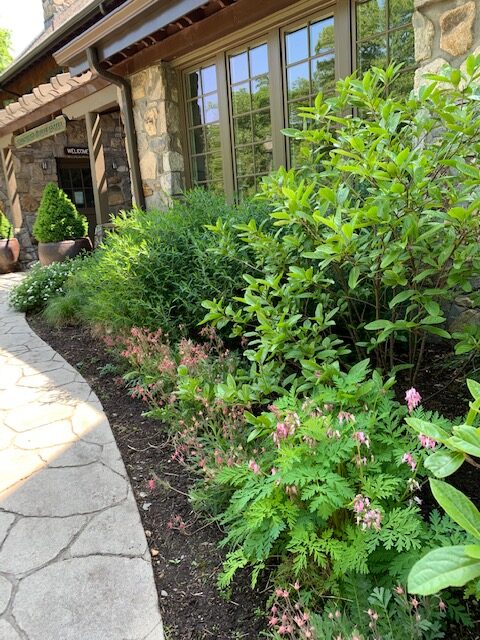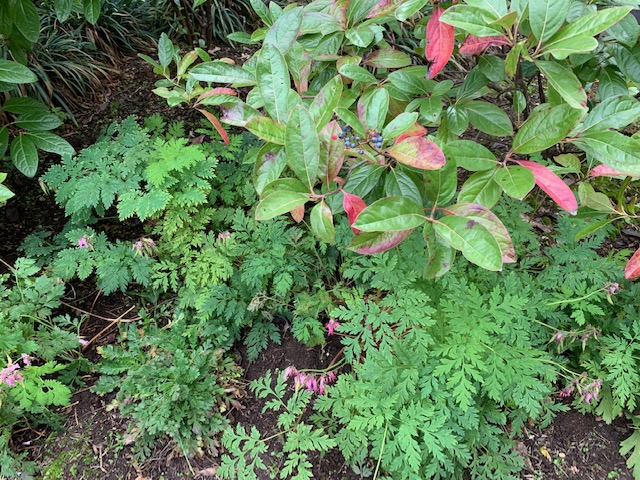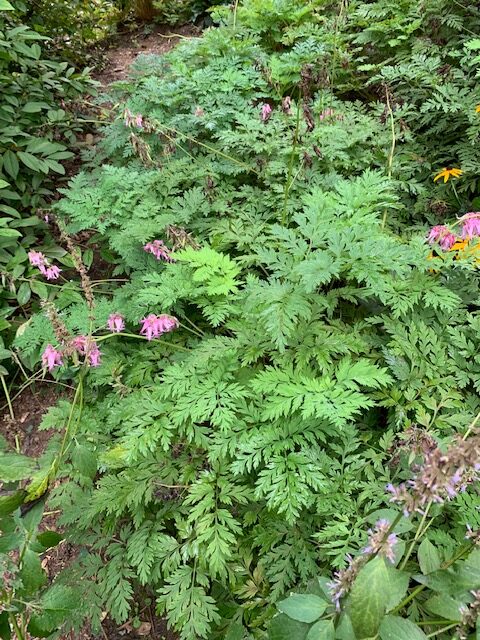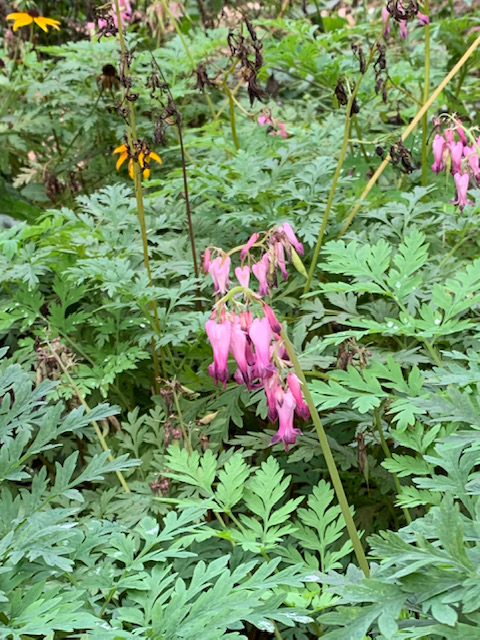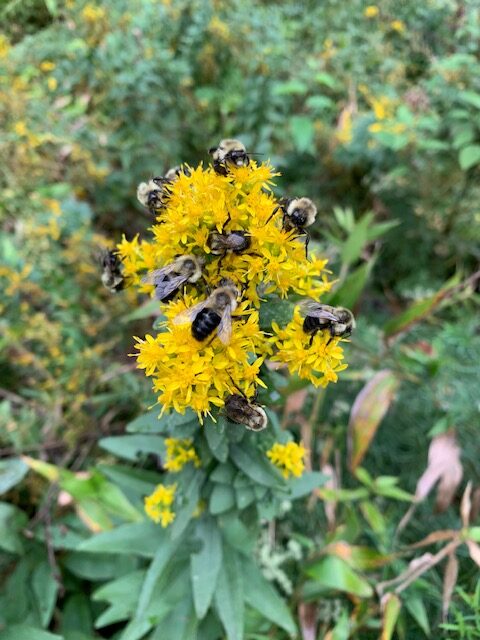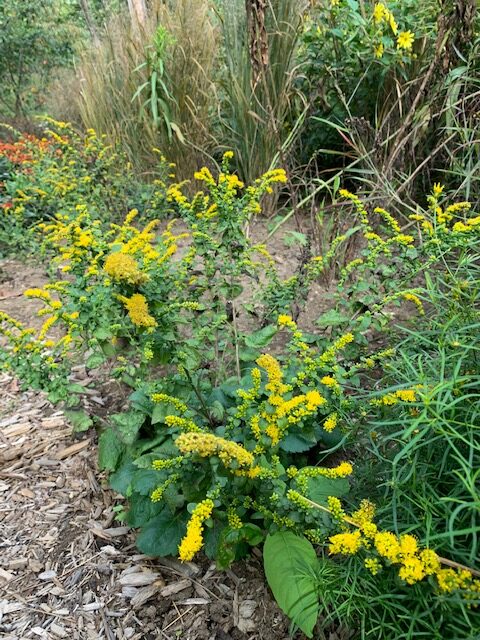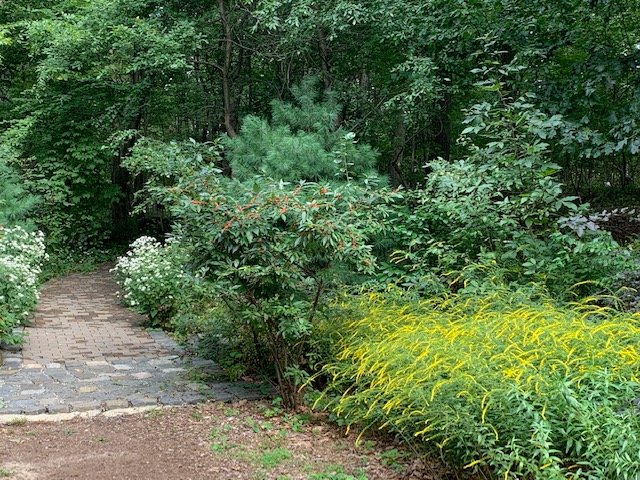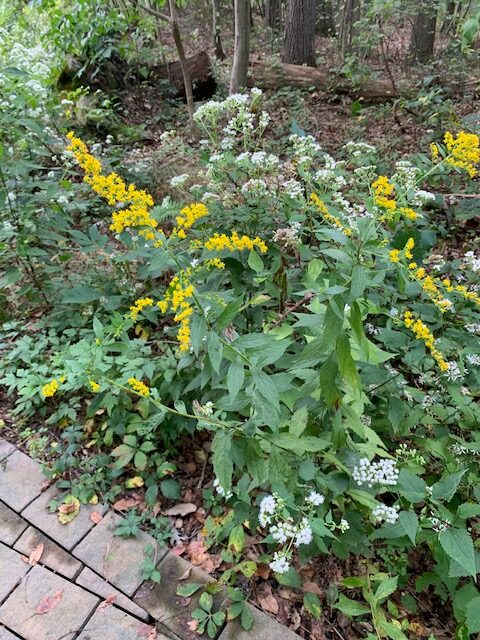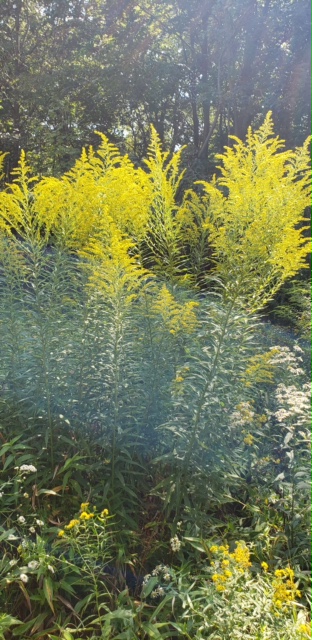We were very excited at the Nature Center last week to discover a beautiful Witch-hazel (Hamemelis virginiana) — in full bloom!
It was “discovered” when Guy Pardee of Suburban Natives, LLC freed it from a thicket of invasive shrubs and vines that had hidden it from view. Guy has been working for the past few years removing invasive plants on our grounds. Since restoring native plant life on our 33-acre preserve is one of our top priorities, it is especially gratifying to find a wonderful native tree right at its peak.
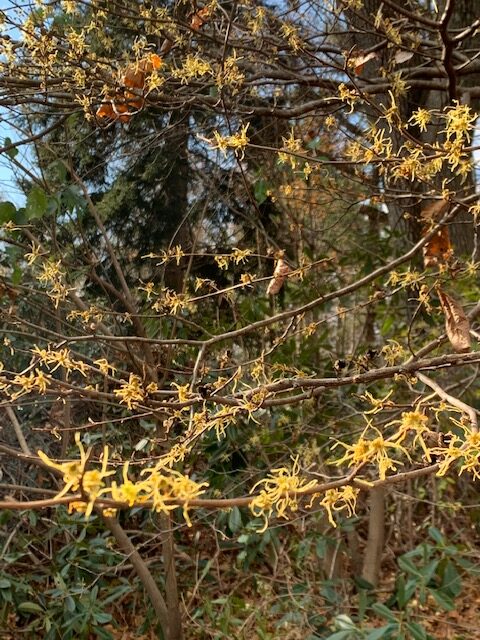
Witch-hazel is a fascinating plant. It’s a multi-trunked shrub or small tree that evolved as an understory plant in the forests of the Northeast. You might not notice it at all in the spring or summer when it modestly sits under bigger trees in part shade. But in early winter, when all the leaves are down and most plants are going to sleep, Witch-hazel starts blooming. Its flowers are fragrant, and bright yellow with tiny streamers reaching out in all directions.
The leaves, bark, and twigs of Witch-hazel contain tannins and flavonoids that Native Americans used for centuries to treat skin ailments. European colonists soon adopted the practice, and today Witch-hazel is one of the few plants the Food and Drug Administration has approved for use in over-the-counter products. Many cosmetics companies use Witch-hazel in toners, diaper rash remedies, acne treatments, pore reducers, and after-shaves.
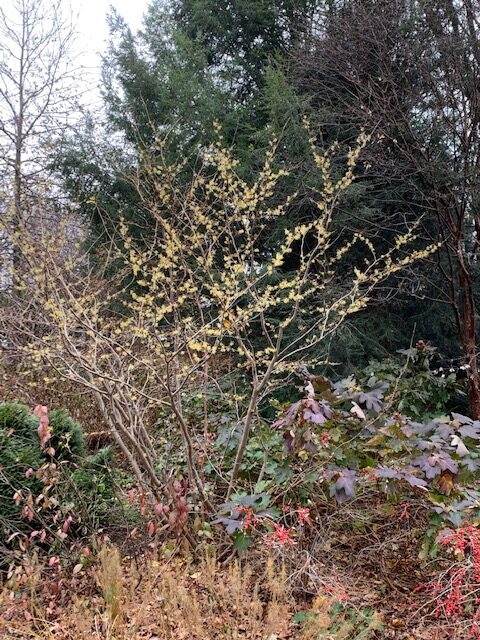
A more questionable early use of Witch-hazel was the practice of using forked branches as dowsing or divining rods to search for underground water. A “water witch” would hold the forked end of a Witch-hazel branch and walk until the flexible tip supposedly dipped when underground water was detected. Dowsing with Witch-hazel branches for well-digging was a common practice right into the 20th century.
The real mystery of this plant still isn’t settled. Why does Witch-hazel start blooming in winter when pollinators are already hibernating? And what insect does pollinate the flowers? Some researchers have pointed to a moth species that survives freezing temperatures by shivering so hard that its body warms above surrounding air temperature. Others have suggested that a small and very late-acting bee is the pollinator. Still others have theorized that swarms of tiny gnats do the job. More research is required.
But the coolest thing about this fascinating plant? Because of its strangely late pollination, there isn’t time for the fruit to ripen in the same year the flowers open. It takes the whole next summer for the seeds to slowly ripen in their pod. Then, just as the flowers start blooming in the freezing cold, the pod explodes throwing the ripe seeds 10 to 20 feet away, where hopefully they will rest until spring weather is warm enough for germination.
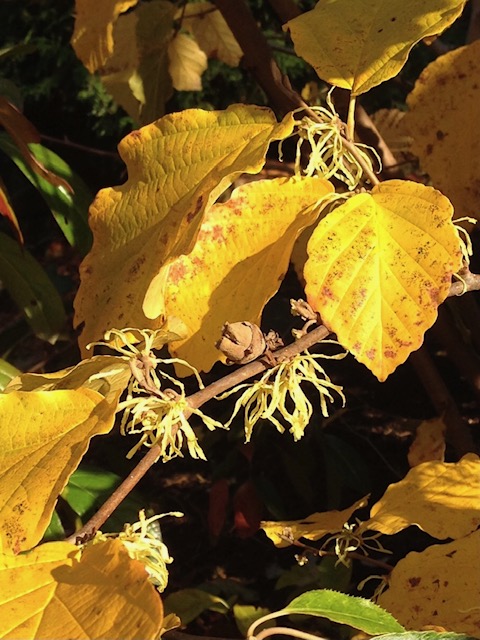
Lately, we’ve seen nurseries offering non-native hybrids of Witch-hazel for sale. These varieties with orange or red flowers are recent introductions of hybridized Asian species, so their value to our native wildlife and potential for invasiveness are unknown. Our view is that it’s always safer to go with species that evolved in our region.
Hamemelis virginiana, our native Witch-hazel, is a garden-worthy plant that brings late-season interest to suburban landscapes. Try it against a background of evergreens in a partly shaded area. On a cold winter’s day, you won’t be sorry.
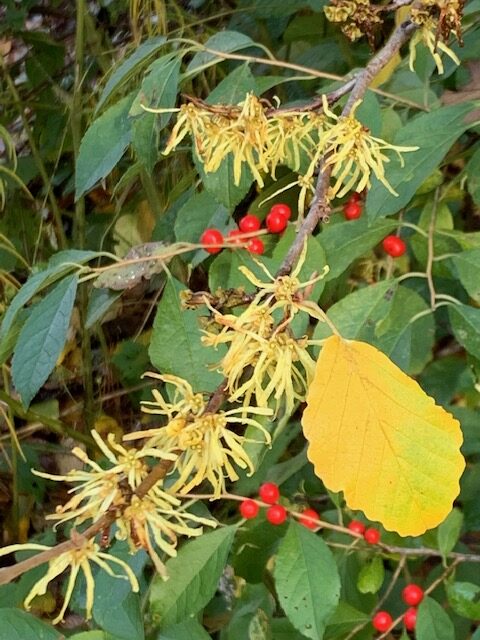
This blog is authored weekly by Cathy Ludden, local expert and advocate for native plants; and Board Member, Greenburgh Nature Center. Follow Cathy on Instagram for more photos and gardening tips @cathyludden.

